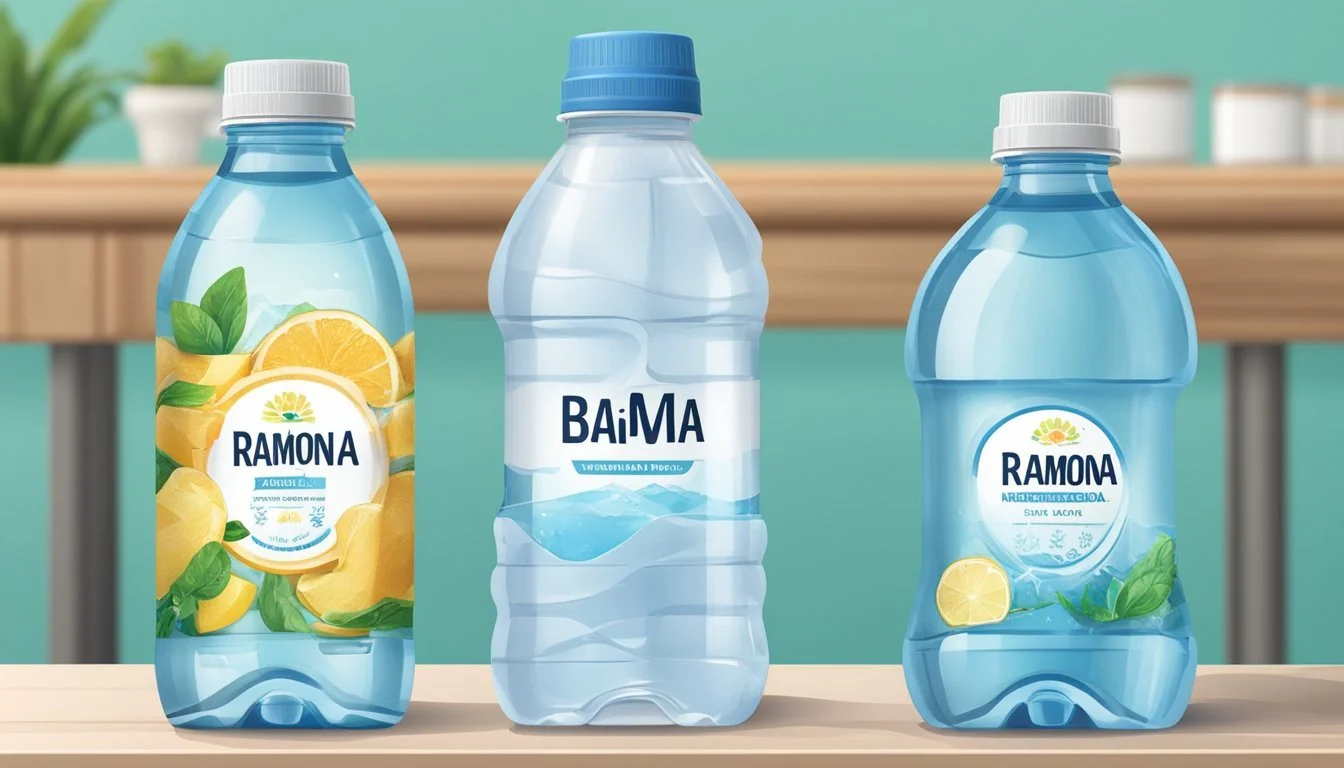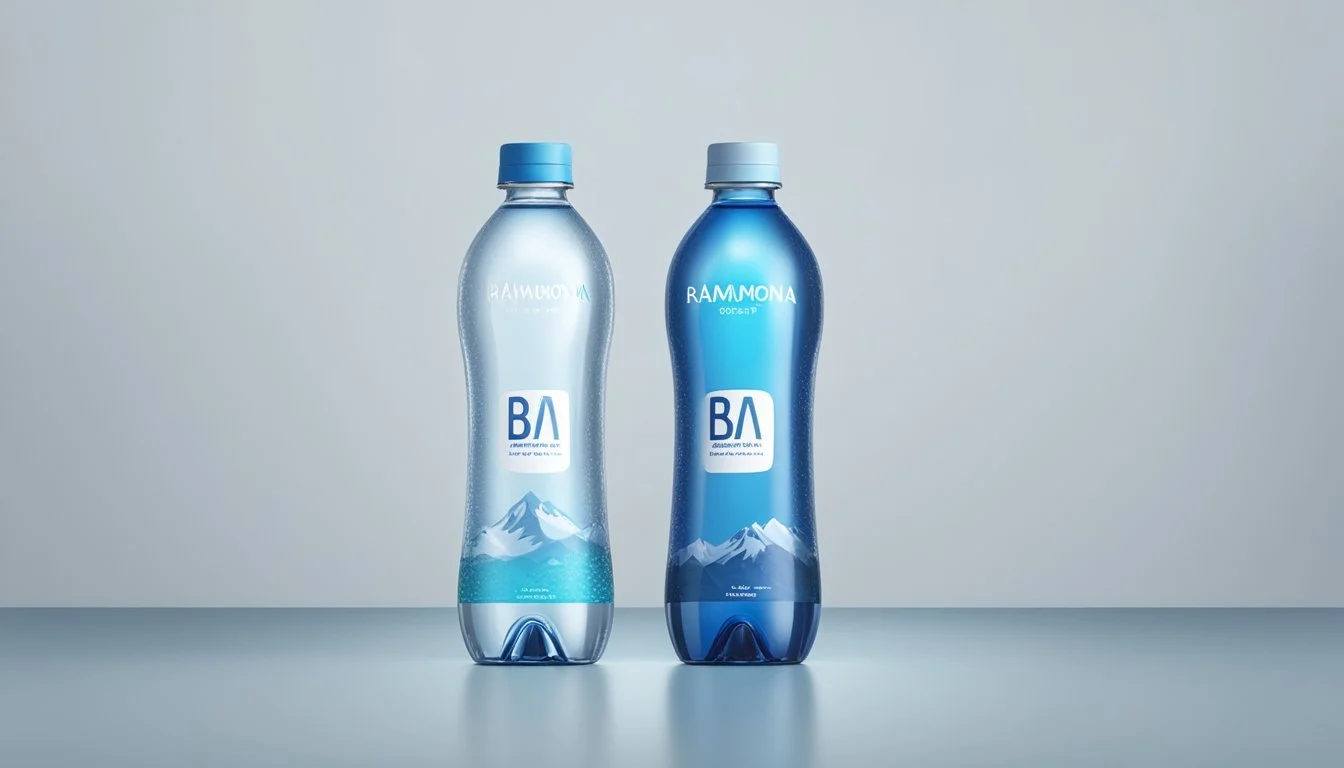Bai vs. Ramona
A Comprehensive Bottled Water Comparison
When it comes to selecting the best bottled water, consumers often find themselves comparing popular options like Bai and Ramona. While Bai boasts its low sugar content and added antioxidants from coffee fruit extract, Ramona offers a different set of benefits that appeal to a specific audience. Bai water is particularly appealing to those who appreciate flavored water with health benefits, offering a unique blend that includes minimal calories and no artificial sweeteners.
Ramona, on the other hand, distinguishes itself with a commitment to purity and taste. Although details about Ramona water are less discussed, it presumably emphasizes quality sourcing and a clean, refreshing flavor profile. This can be especially important for individuals who prefer unflavored or lightly flavored water without compromising on the taste.
Choosing between Bai and Ramona ultimately depends on individual preferences. If enhancing hydration with added nutritional benefits is a priority, Bai may be the superior choice. However, for those who value simplicity and a pure drinking experience, Ramona could be the favored option. The decision lies in what you prioritize in your bottled water selection.
Comparing the Brands
When evaluating Bai and Ramona, it's important to consider their histories, origins, and the variety of products they offer. This helps consumers make informed choices based on personal preferences and priorities.
Brand History and Origin
Bai Water:
Established: Bai was founded in 2009 by Ben Weiss.
Mission: The brand emphasizes antioxidant-infused beverages aimed at offering a healthier alternative to sugary drinks.
Source: Bai drinks primarily use coffee fruit extract, which is an unusual and distinct source compared to traditional bottled waters.
Ramona:
Established: Ramona, though newer on the market, has quickly gained a following.
Mission: Known for its commitment to purity and simplicity, Ramona sources its water from natural springs.
Source: Focuses on offering pure, untouched natural spring water, ensuring minimal processing and maintaining natural mineral content.
Product Range
Bai Water:
Flavors: Bai offers a wide range of flavors, integrating different fruits like watermelon and berries.
Varieties: The brand not only provides flavored waters but also antioxidant-infused teas and carbonated drinks.
Health Benefits: Bai drinks are low in sugar and calories, and they include antioxidants from coffee fruit extract, appealing to health-conscious consumers.
Packaging: Typically available in plastic bottles designed for easy consumption on the go.
Ramona:
Flavors: Ramona focuses more on the purity of spring water rather than adding flavors.
Varieties: The brand offers still and sparkling versions of its natural spring water.
Health Benefits: With its emphasis on natural purity, Ramona water contains essential minerals and is free from contaminants and artificial additives.
Packaging: Often marketed in eco-friendly options like glass bottles, aligning with its commitment to sustainability.
By comparing their histories and product offerings, consumers can pinpoint which brand aligns better with their preferences, whether they favor flavored low-calorie drinks or pure natural spring water.
Taste and Flavor Experience
Bai and Ramona each offer a distinct flavor experience that appeals to different taste preferences. Bai focuses on bold, infused flavors with health-conscious ingredients, whereas Ramona emphasizes natural, straightforward taste.
Palate Profiles
Bai beverages are known for their bold and unique flavors, primarily driven by their antioxidant-infused formulas. The taste profiles include cherry, blueberry, and watermelon, each offering a distinct and vibrant flavor. Bai's use of coffee fruit extract also adds a subtle, underlying sweetness.
Ramona, on the other hand, prioritizes a more traditional water taste. Their flavors tend to be less intense and more natural, catering to those who prefer a clean and unflavored water experience. This approach makes Ramona a favorable option for individuals seeking hydration without the strong, fruity bursts that Bai provides.
Flavor Enhancers
Bai uses a combination of natural flavors, stevia, and erythritol to enhance the taste without adding calories. These sweeteners contribute to Bai’s signature sweetness, making the beverages appealing to those who enjoy flavorful but low-calorie drinks. The lack of artificial sweeteners and minimal use of sugar are significant pluses for health-conscious consumers.
Ramona typically avoids using heavy flavor enhancers and sweeteners, maintaining a focus on the purity and natural taste of the water. This makes it a preferred option for those who are sensitive to sweeteners or who prioritize a more straightforward water taste over a complex flavor profile. They may sometimes use light natural flavors, but without the pronounced sweetness found in Bai.
Nutritional Analysis
This section will analyze the nutritional differences between Bai and Ramona bottled waters, focusing on caloric content, vitamins and antioxidants, sweetening agents, and mineral additives.
Caloric Content
Bai beverages are known for being low-calorie, with each bottle containing only 10 calories. This low-caloric content makes Bai an attractive option for those monitoring their caloric intake.
Ramona water, on the other hand, is typically categorized as zero-calorie since it primarily consists of pure water without additional ingredients. For individuals strictly watching their calorie intake, Ramona offers the advantage of being entirely calorie-free.
Vitamins and Antioxidants
Bai includes vitamins and antioxidants in its formulation. Antioxidants from coffee fruit extract and tea extract are notable components that contribute to the beverage’s health benefits. These antioxidants help combat oxidative stress in the body.
Ramona water generally does not contain added vitamins or antioxidants. As a result, it does not provide the same supplementation benefits as Bai. For consumers seeking additional nutritional benefits beyond hydration, Bai offers an edge with its added vitamins and antioxidants.
Sweetening Agents
When it comes to sweeteners, Bai uses a blend that includes stevia leaf extract, a natural low-calorie sweetener, and a small amount of sugar (1 gram per bottle). This combination provides a sweet taste while keeping the calorie count low.
Ramona water does not contain any sweetening agents. It remains a straightforward hydration option without added flavors or sweeteners. Consequently, individuals who prefer unsweetened beverages might favor Ramona, while those looking for a flavored, low-calorie option might prefer Bai.
Mineral Additives
Bai’s formulation includes added electrolytes such as calcium and potassium, which can aid in improving hydration efficiency. These minerals help with the body's fluid balance and can be beneficial, especially during physical activities.
Ramona water, being pure water, does not typically have extra minerals added unless stated otherwise on the packaging. While it effectively hydrates, it does not offer the electrolyte benefits that Bai does. This distinction can be crucial for individuals who require additional mineral intake during their daily routines or exercise.
In summary, each brand offers different nutritional features that cater to varying consumer needs and preferences.
Health and Safety Considerations
When comparing Bai and Ramona bottled waters, it is vital to consider how each product affects hydration, electrolyte balance, and potential health impacts. This analysis will help health-conscious consumers make informed decisions based on specific health benefits and potential side effects.
Hydration and Electrolytes
Bai Water is low in calories with only 10 calories per bottle and contains 1 gram of sugar. It offers hydration with added antioxidants derived from coffee fruit extract and tea extract. While it is not specifically marketed for its electrolyte content, Bai might still contribute to maintaining hydration levels.
Ramona, on the other hand, typically provides plain or lightly flavored water options. Electrolyte content is not a prominent feature in Ramona’s offerings, which might be a consideration for those who need replenishment post-exercise or in hot climates.
Ensuring hydration is crucial for health, and the low calorie count of both waters can be advantageous for people monitoring their caloric intake.
Potential Health Effects
Consumers should be aware of potential health effects relating to each brand's packaging and ingredient profile. Bai uses plastic bottles, which a 2021 study indicated could leach harmful chemicals. Drinking from glass or metal containers could be a safer choice for reducing exposure to these chemicals and minimizing environmental impact.
Bai's inclusion of antioxidants might offer some potential health benefits by combating oxidative stress. However, the actual health benefits depend on individual dietary needs and the amount of Bai consumed.
Ramona's products usually emphasize natural spring water, which might attract those prioritizing purity. Without additives or unique ingredients, the health effects of Ramona mainly hinge on proper hydration and the inherent quality of the water source.
Environmental and Sustainability Factors
Environmental and sustainability factors are crucial in evaluating bottled water brands. This section looks at the packaging materials, water sourcing and purity, and brand initiatives and water standards of Bai and Ramona.
Packaging Materials
Bai's beverages are typically packaged in plastic bottles, a common choice that unfortunately has a significant environmental impact due to the plastic waste generated. These plastic bottles contribute to pollution if not disposed of properly. Plastic recycling helps, but not all plastics get recycled, leading to more waste.
Ramona also uses plastic for their bottles, but they make efforts to utilize recycled plastic (rPET). This choice slightly mitigates the environmental footprint by reintroducing plastic waste into a usable form, reducing the demand for new plastic.
Key Points:
Bai uses traditional plastic bottles, leading to potential waste issues.
Ramona incorporates recycled plastic (rPET) into their packaging.
Both approaches impact the environment but with different degrees of sustainability.
Water Sourcing and Purity
Bai sources its water and infuses it with antioxidants from coffee fruit extract and tea extract. While Bai’s water undergoes filtration, the focus is more on added health benefits rather than the purity of the water itself.
Ramona, on the other hand, emphasizes the purity of its water. They source their water from protected springs, ensuring that the water remains natural and unaltered. This can provide a cleaner, more natural taste compared to Bai's flavored water options.
Key Points:
Bai’s water is filtered and infused with antioxidants.
Ramona’s water is sourced from protected springs, focusing on natural purity.
Purity standards and sourcing locations affect the final quality of the water.
Brand Initiatives and Water Standards
Bai has initiatives centered around providing a flavorful hydration option with minimal sugar and added antioxidants. However, their environmental initiatives seem less pronounced compared to their product focus.
Ramona is more active in its sustainability efforts. They invest in renewable energy for production and advocate for minimizing water wastage. These initiatives align with growing consumer demand for environmentally responsible products.
Key Points:
Bai focuses on product features like low sugar and antioxidants.
Ramona prioritizes renewable energy and waste minimization in its production.
Differences in environmental initiatives affect each brand's sustainability profile.
Consumer Insights
Consumer insights reveal how Bai and Ramona perform in the bottled water market, focusing on preferences, trends, and brand perception.
Market Trends and Preferences
Bai and Ramona cater to different segments within the bottled water market. Bai is popular for its flavored water options, offering low-calorie drinks infused with antioxidants from coffee fruit extract. This variety appeals to health-conscious consumers seeking hydration with added benefits.
Ramona, in contrast, is favored for its pure water options. It attracts consumers prioritizing simplicity and natural taste. Market trends show a growing demand for hydration products that offer more than just water. Flavored options like Bai gain traction among younger demographics, while pure water options like Ramona continue to maintain a strong following among traditionalists.
Brand Loyalty and Perception
Consumer loyalty for Bai and Ramona hinges on brand perception and product satisfaction. Bai's flavored waters are often praised for their unique taste and health benefits. The low-calorie count and absence of artificial sweeteners foster positive feedback and repeat purchases. This positions Bai as a health-forward brand in the eyes of its consumers.
Ramona, on the other hand, relies on its reputation for providing high-quality, natural bottled water. Customers who prioritize simplicity and purity tend to show strong brand loyalty. Positive word-of-mouth and consistent quality reinforce Ramona's standing. Both brands benefit from clear product differentiation, which helps them maintain distinct customer bases.
Conclusion
When comparing Bai and Ramona bottled waters, several factors come into play. Both brands have unique attributes that appeal to different consumer needs.
Nutritional Content:
Bai offers antioxidants from coffee fruit extract, vitamin C, and low calories (10 per bottle).
Ramona is purely refreshing with zero calories and no added sugars or preservatives.
Ingredients:
Bai infuses its water with fruit flavors and natural sweeteners.
Ramona keeps it simple with pure water and no additives.
Health Benefits:
Bai contains selenium, which supports heart health and immunity.
Ramona provides essential hydration without additional ingredients.
Taste and Flavor:
Bai offers a range of unique flavors owing to the fruit infusions.
Ramona focuses on clean and natural taste.
Environmental Impact:
Bai uses plastic bottles but emphasizes their antioxidant infusion.
Ramona may utilize eco-friendly packaging, raising its sustainability profile.
Price:
Bai's added ingredients might result in a higher price point.
Ramona, being straightforward water, could be more cost-effective.
Choosing between Bai and Ramona depends on individual preferences and health goals. Whether you prioritize added nutrients and flavor (Bai) or pure hydration (Ramona), both offer distinct advantages suitable for different lifestyles. Preferences in taste, health benefits, and sustainability are crucial in making the final decision.





